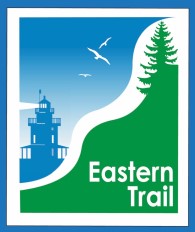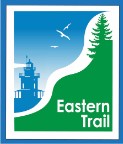
One organization is working to connect cities and towns from Maine to Florida with protected trails.
by EILLIE ANZILOTTI | published Jun 28, 2016
From northern Maine to the tip of Florida, the East Coast of the United States stretches 3,000 miles. It’s a diverse, expansive route, cutting through wooded hills and rocky coastlines before hitting the sun-drenched beaches of the South. And all of it can be traveled by bicycle.
The East Coast Greenway Alliance has been working since 1991 to connect the whole geography of the Atlantic seaboard with protected bike paths. So far, 850 miles of trail have been designated as Greenway. The project is about 31 percent complete, says Dennis Markatos-Soriano, the executive director of ECGA. By 2020, the ECGA hopes to add another 200 miles.
As it winds down the coast, the East Coast Greenway passes through 450 communities in 15 states. Efficiency is not the point: Instead of cleaving to interstate routes, the Greenway mostly follows the rivers and old train tracks connecting the cities and towns along the coast. “Even though a pretty small percentage of the trail’s miles actually pass through cities, it’s still very much an urban story,” says the Director of Greenway Development, Eric Weis, who will be transitioning to the ECGA Advisory Board after 18 years with the Alliance this summer.
Before the East Coast Greenway was labeled, and before the Alliance was founded, many of the paths that make up sections of the Greenway today already existed. In New York, a trail follows the length of the Hudson River; in Philadelphia, the Schuylkill River trail stretches around 25 miles. They’re now Greenway-affiliated, but in the early 90s, Weis says, the ECGA founders looked at these distinct urban corridors and began to wonder: what would it take to connect them?
“We can’t get this done with a top-down approach,” Markatos-Soriano says. The Greenway cuts across federal, state, and local interests. When completed, the ECGA hopes it will serve as a viable national thoroughfare—an interstate for the health-conscious, eco-friendly age. But reaching that point, Markatos-Soriano says, will take cooperation and support at the community level. A network of ECGA regional coordinators and volunteers are working to engage local governments on the project and to secure federal and private-sector funding. There has been very little pushback: Since 2010, the Greenway’s annual budget has more than doubled from $470,000 to just under one million dollars last year. “It’s not a question of when the Greenway will get done, it’s a matter of how fast,” Markatos-Soriano says. The Greenway, he adds, is “one of those universally appealing projects.”
Read the entire article online here.
<!– The rest of the article, in case it goes away online
The East Coast Greenway, is, in a sense, riding a demographic wave that Markatos-Soriano hopes will speed the completion of the entire route. Fewer Americans are relying on cars, and more are looking at safe and accessible bike and footpaths as a top priority when selecting where to live. And there’s the health impact: The presence of a usable trail makes an active lifestyle more of a possibility. Well over 10 million people use the Greenway annually, Weis says, and as the national and global mentality shifts toward one of greater connectivity, the appeal of traversing the East Coast by one simple mode of transit will only grow.
This “linear community,” as Markatos-Soriano calls the Greenway, attracts two groups of users. There are those who might touch on a section of the trail on their daily route through their city: kids biking to school, joggers out for their regular run. And then there are those like Bob Spiegelman, the chair of the ECGA Board of Trustees, who approach the trail as a whole. In 2012, Spiegelman biked the entire length of the Greenway, from Calais, Maine, to Key West, Florida. Logging around 50 miles a day, his trip took eight weeks. It’s possible to shave down that time, but that defeats the purpose, Weis says. With your head down and the ground zipping beneath you, “you’re going right through Boston without stopping to visit any historic sites. You’re going through Washington, D.C., without seeing any monuments or museums. You’re going through Charleston without stopping to sit under a tree and admire the architecture,” Weis adds. “If you do 100 miles a day for a month, you can ride the whole East Coast Greenway, but you’ve robbed yourself of the heart of the experience.”
The ECGA cannot predict when the whole Greenway will be completed, but the organizers understand that a gradual approach will be necessary to ensure the long-term success of the project. “Bike-path planning is not a good career choice for people who want a quick return on investment,” Weis says. Through slow and careful work on the local level, the Greenway is coming together as an artery that carries with it parts of the varied communities it passes through. Each of the Greenway-designated sections conforms to standard trail requirements: The material of the path must be strong enough to support a touring bike, and the lanes have to be wide enough so people can safely pass—around 10 feet is ideal, Weis says.
But how the trail manifests is really left up to the local communities. A section of the Greenway running alongside a canal towpath in New Jersey, Weis says, passes through a state historic site. As such, the path is made of crushed and compacted stone, not unlike a trail built in the 1800s. In that way, biking the whole Greenway is as much an exercise in connectivity as it is in specificity. The project, Markatos-Soriano says, touches on so many different elements, from environmental sensitivity to alternative transportation. But fundamentally, “it’s about seeing America at the right speed, where you can take in all of the culture around you,” he adds. “And you don’t have a windshield between yourself and the community.”
–!>












0 comments
Write a comment